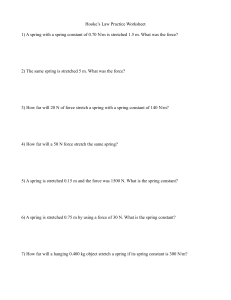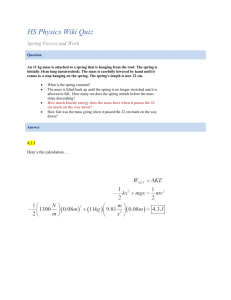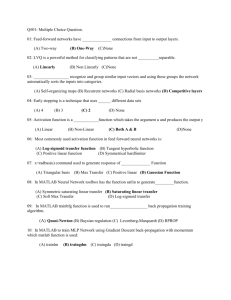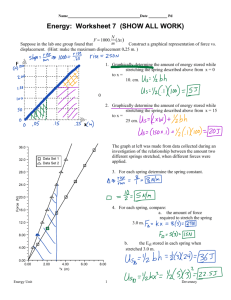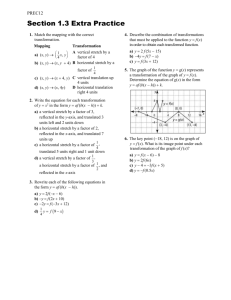Elastic Spring Example
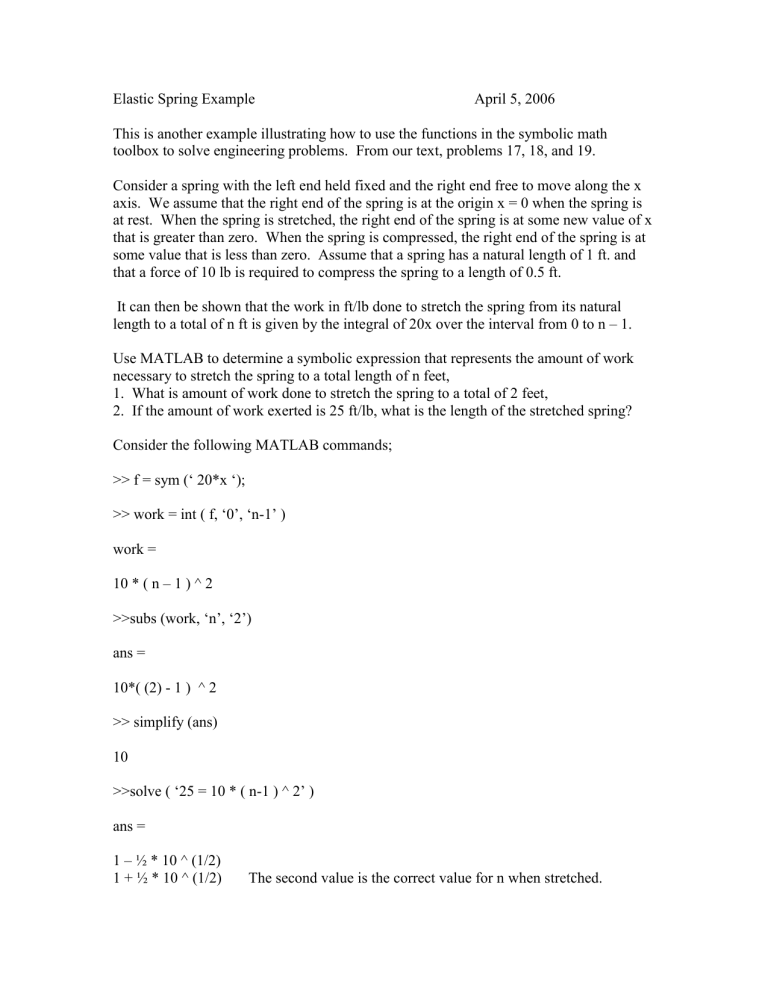
Elastic Spring Example April 5, 2006
This is another example illustrating how to use the functions in the symbolic math toolbox to solve engineering problems. From our text, problems 17, 18, and 19.
Consider a spring with the left end held fixed and the right end free to move along the x axis. We assume that the right end of the spring is at the origin x = 0 when the spring is at rest. When the spring is stretched, the right end of the spring is at some new value of x that is greater than zero. When the spring is compressed, the right end of the spring is at some value that is less than zero. Assume that a spring has a natural length of 1 ft. and that a force of 10 lb is required to compress the spring to a length of 0.5 ft.
It can then be shown that the work in ft/lb done to stretch the spring from its natural length to a total of n ft is given by the integral of 20x over the interval from 0 to n – 1.
Use MATLAB to determine a symbolic expression that represents the amount of work necessary to stretch the spring to a total length of n feet,
1. What is amount of work done to stretch the spring to a total of 2 feet,
2. If the amount of work exerted is 25 ft/lb, what is the length of the stretched spring?
Consider the following MATLAB commands;
>> f = sym (‘ 20*x ‘);
>> work = int ( f, ‘0’, ‘n-1’ ) work =
10 * ( n – 1 ) ^ 2
>>subs (work, ‘n’, ‘2’) ans =
10*( (2) - 1 ) ^ 2
>> simplify (ans)
10
>>solve ( ‘25 = 10 * ( n-1 ) ^ 2’ ) ans =
1 – ½ * 10 ^ (1/2)
1 + ½ * 10 ^ (1/2)
The second value is the correct value for n when stretched.
